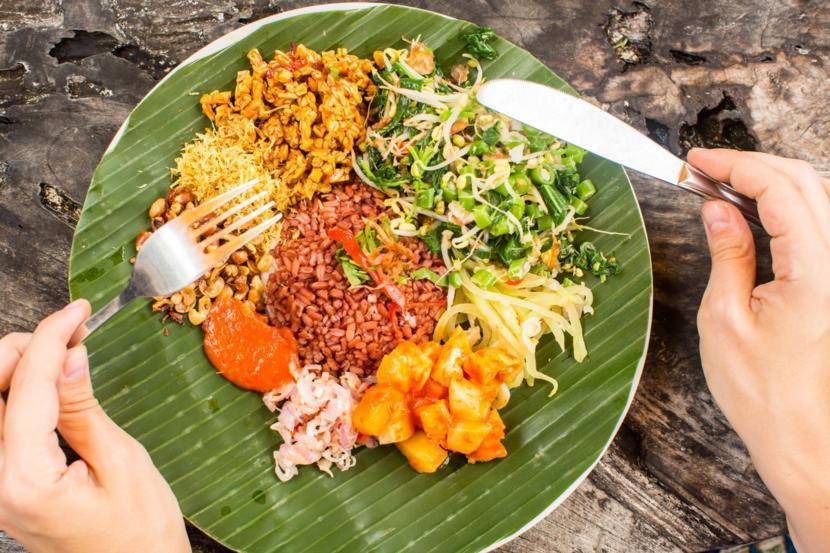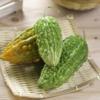Butternut Squash: Nutrition Facts and Health Benefits

The cream-colored elongated bell which is called butternut squash tastes sweet like a sweet potato. The butternut is having thin cover which is easy to peel unlike many other winter squash, which are having thick layer around them. Butternut squash can be cut into pieces easily and can be roasted without even removing the skin.
Butternut squash, also called as winter squash, is a highly appetizing and healthy vegetable available at any time of the year. Butternut squash is orange in color and also has a unique taste. It can be prepared in many ways and if it is added to any autumn menu, it fits well among a variety of recipes and dishes. It can be also added with pumpkin and sweet potato while preparing sweet dishes.
Nutritional Facts about Butternut Squash
The butternut squash is full of vitamin A, vitamin C and dietary fiber. The vitamin A is grouped into two forms of substances such as retinoids and carotenoids, which are the most common. Butternut squash has four carotenoids - alpha-carotene, beta-carotene, lutein and zeaxanthin. The alpha- and beta-carotene are converted into retinol which is one form of vitamin A, which is required to have healthy eyes and skin.
The retina consists of lutein and zeaxanthin in the form of carotenoids and it works effectively on cataracts and macular degeneration as an antioxidant and also prevents other age-related eye problems. The everyday dosage of vitamin A – as per the medical advice is about 3,000 international units for men and 2,333 units for women. One cup of butternut squash offers roughly 14,882 international units of vitamin A.
Butternut squash is an antioxidant
Butternut squash which is available in dark orange color offers beta-carotene of higher amount. It is considered to be one of the powerful antioxidants which protects the body against free radical damages. Antioxidants work over the free radicals and help in protecting the healthy cells. Otherwise, the inflammation caused can lead to chronic illnesses.
Antioxidants are also highly important during winter as they support the immune system. The substance Beta-carotene can be also turned into vitamin A and it helps to remove toxins and also make use of lutein and zeaxanthin, which supports eyes.
Manganese is used to protect the cellular structures which produce energy. Generally, water never gets mixed with oil, but the fats in the body require antioxidant protection. The role of vitamin E is to provide the necessary protection to the lipids which forms the cell wall structures.
Vitamin C is water soluble and can freely circulate the fluids in the body. It also neutralizes different forms of radicals which can damage skin cells. One cup of cubed butternut squash offers 32 percent of the recommended daily intake of vitamin C for men and 39 percent to women. It also provides 14 percent of vitamin E and about 18 percent of manganese.
Butternut is full of Fiber
The butternut squash is high in both, soluble and insoluble dietary fiber and it also has lower glycemic index. One cup of butternut squash has about 7 grams of fiber. It is useful in regulating the digestive system and also offers complete support for the healthy bacteria which helps in overall health.
The insoluble fiber helps in digestion and prevents constipation. The soluble fiber affects the absorption of carbohydrates and also controls the spikes in blood sugar. The soluble fiber also lowers cholesterol and controls it completely by reducing the percentage. One cup of butternut squash has 3 grams of fiber and 8 percent of the recommended daily intake for men and 12 percent for women.
The butternut squash has long chain polymers which are part of the starch content. It also helps to maintain sugar levels. Being a low calorie and low fat vegetable, butternut squash is highly popular among people who look for effective weight loss.
Butternut is rich in Electrolytes
Electrolytes are one form of minerals which easily break down into smaller molecules. It can carry an electrical charge in the entire body in form of fluids. Muscle contraction and nerve impulses in the human body are stimulated by the electrolytes. Electrolytes also control the entire movement of fluids in and out of cells and it ensures the balance of the body.
The three important electrolytes, potassium, magnesium and calcium are present in butternut squash. Potassium helps to regulate the heartbeat by initiating the electrical impulses and it works with sodium and keeps stimulating muscle contraction.
The other two substances magnesium and calcium keeps working opposite each other. Magnesium has the ability to relax cardiovascular muscles, and calcium can stimulate the contraction. It is found that one cup of cubed butternut squash offers 10 percent of the daily intake of potassium, 7 percent of calcium and 11 percent of magnesium.
Butternut squash is a source of Calcium
Like many other vegetables such as broccoli, kale, soy beans and many others, butternut squash is also a source of calcium. Calcium is one of the most essential bone-building minerals which helps in the supports of healthy teeth and bones. It is also useful in the development of bones in children. It is highly preferred by people who do not like to have milk and other calcium-related products.
Buttertnut squash - best during pregnancy
Butternut squash also has high levels of folic acid, which is helpful in preventing neural-tube defects which are mainly found among growing foetuses. Before and during the pregnancy, folate is highly essential and the Department of Health recommends that pregnant women consume 400 micrograms of folate everyday.
It should be a part of the diet of pregnant women and it should be given during pregnancy, for better results. Folate is water soluble and it can also be excreted from the body easily.
Folate helps in keeping the hormones in balance and keeps the energy levels high. Folate can be found in green plants such as spinach, asparagus and broccoli.
Butternut squash seeds good for skin
The seeds of the butter nut squash offer various nutrients as well. Its seeds are the source of omega-6 fatty acids which helps to provide glowing skin and healthy body.
The seeds should be taken out and made pulp-free. The seeds can be gently roasted in the oven for 10 minutes along with olive oil and salt. The seeds can be added as a part of winter salads, which not only tastes delicious but also offers nutrient-packed vegetables throughout the season. The salad added with seeds can become a part of snacks.
Butternut squash is versatile in nature
Butternut squash is used in many different ways and in a variety of recipes. The butternut squash is versatile in nature because it can be used in soups, stews, curries, risottos and also many other dishes, which are healthy and nutritious.
The butternut squash has to be peeled, deseeded and the pulp should be scooped out. Butternut can also be sliced and wedged. It can be either baked or roasted along with other vegetables. It can be diced and used as a perfect alternative for potatoes. It works as part of a main dish or it can be used as an ingredient and added into various side dishes. It can be cut in the middle and baked in the oven along with the meat and it makes the dish delicious when served.
Other Health Benefits of Butternut Squash:
Every recipe prepared with the help of butternut squash is highly nourishing and full of iron, vitamins and other nutrients. One cup of butternut squash offers 295% of vitamin A, 14% magnesium, 12% vitamin B-6, 50% vitamin C and 5% iron. It also offers about 2,000 calories.
Potassium:
Butternut squash contains good amount of potassium. One cup of butternut squash can have about 550 milligrams of potassium. Potassium is useful in counteracting the effect of sodium in the diet and reduces the chances of getting high blood pressure.
Vitamin A:
Butternut squash contains 14,882 IU of vitamin A which is much more than the recommendations. Vitamin A is an antioxidant that offers benefits for skin, digestive system and eyes.
B-complex:
Vitamin B is available in butternut squash in a rich quantity. It also has folates, riboflavin, niacin, vitamin B-6, thiamin which are full of vitamin B. Also, it has pantothenic acid which keeps the body energy high and can easily double the red blood cells. It also activates new cells in the body and supports the immune, nervous and digestive systems.
Vitamin C:
Butternut squash has vitamin C which acts as a potent antioxidant and helps in both collagen synthesis and supports the immune system.
Important Tips About Butternut Squash
Keep the following tips in mind while selecting butternut squash:
- Select a butternut squash which is heavy for its size.
- Never make use of under-ripe squash green in color.
- The butternut squash should be stored at 50 to 55° F.
- Do not refrigerate squash, unless it is used frequently to avoid getting it rotten.
- The squash cut into pieces can be stored in the refrigerator for not more than a week.
Following are tips for using butternut squash during fall and winter:
- While using it in soups, blend it along with stock and spices.
- While baking it, use rosemary and garlic.
- When you want to steam it, drizzle with olive oil.
- It can be mixed into curries.
- You can also add it to stews.
- While baking it, you can add it with apples and ham.
- You can bake it in a pie like a pumpkin.
- Mash it with yams and also season it with ginger and cinnamon.
Butternut squash can be used in many different recipes and a variety of dishes. Butternut squash is highly preferred while preparing many different food products around the world.















